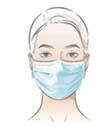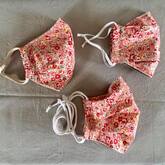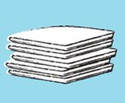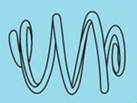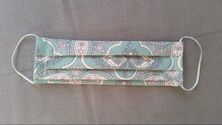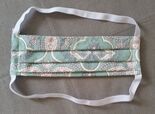1) FIT
|
The most important thing is that the face covering should:
The following features will improve fit and make the face coverings last longer:
|
|
Our community recommends the Pleated Mask with Reverse Nose Fold because it has these features:
If you prefer written instructions you can download a pdf here. You can also create the channels for the adjustable straps by adding bias binding rather than folding over the edges. |
|
|
Fitting around the nose
We recommend that you add an extra fold to enhance fit around the nose (also known as the Passmore pleat - see our recommended pattern for details). Some patterns call for a wire nose piece, which can be made from thin wire or items such as pipe-cleaners. It is your choice, but the safe, long-lasting, easy-to-wash solution is to add an extra fold instead of wire. |
|
Face coverings with clear windows
If you are sewing to donate, there are currently many organisations who are in need of face coverings with a clear window. Our sewists have been testing different designs and have the following recommendations:
If you are interested in making a very simple version that recycles plastic (by using a plastic bottle as the 'window'), please see here for the video tutorial. This design is under development - if you have ideas or questions about it please join the conversation on our facebook group. |
|
2) FABRIC
|
Tests show the best material for face coverings is cotton or other natural materials. See Smart Air guide to materials.
Ideas for finding 100% cotton:
|
|
The trick is to get a balance, as fabric must be both:
If you have fabric you think is cotton but you're not sure, then you might consider a burn test, as described here. |
3) FASTENING
|
There are three main types of fastening A) Cord to tie around the head, B) Elastic around the ears and C) Elastic around the back of the head.
The good news is that you don't have to choose - if you pick a design with adjustable straps (a channel on the side that can be threaded with any kind of strap), then the wearer can re-thread with whatever they find most comfortable. |
How to thread with cord or elastic
|
|
A) Cord to tie around the head
Fabric strips (or bias binding) sewn in half, one-inch strips of t-shirt (jersey) material pulled into a cord, or ribbon (if not too slippy). Using a design with adjustable straps, you will need approx 100-125 cm (40-50 inches) of cord. This type of strap has been found most comfortable for long-term wear. |
|
B) Elastic around the ears
3-4mm (1/8 inch) elastic is ideal as wearers say thin elastic behind the ears is most comfortable, but slightly thicker elastic may be ok too. Using a design with adjustable straps, you will need approx 2 x 30cm (2 x 12 inches) of elastic per mask to loop around the ears. This type of strap has been found best for short-term wear and convenience (quick removal). |
4) FILTER
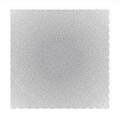
There is plenty of evidence that face coverings made of cotton or other natural materials prevent the spread of Covid-19. It is likely that a good quality filter prevents the spread even more effectively, but the jury is out on the best materials to use. So if you are sewing to donate, we recommend face coverings made of two layers with a filter pocket. This makes them versatile - wearers can decide whether to use a filter, and can adapt their choice of filter material whenever new scientific evidence emerges.
If you want to decide whether to use a filter for your own face covering, we have collected some of the relevant information below to get you started. However, we recommend you also do your own research as the evidence is changing all the time. Here are some of the materials that can be used as filters, each with pros and cons:
If you want to decide whether to use a filter for your own face covering, we have collected some of the relevant information below to get you started. However, we recommend you also do your own research as the evidence is changing all the time. Here are some of the materials that can be used as filters, each with pros and cons:
- A proper medical filter. If you are lucky enough to have something like this, hurrah!
- Paper towel. The Smart Air study shows that paper towel effectively filters small particles, and so it is potentially a good, cheap, easily available option to use as a filters. Bear in mind, as always, that the mask as a whole must still be easy to breathe through, otherwise your breath will escape around the sides of the mask and will not be filtered at all. Also note that paper towels no longer filter well when wet, so change them frequently.
- Non-woven polypropylene. This is frequently a filter layer in commercially made masks (e.g. see this patent), and there is plenty of evidence that it does work as a filter (e.g. Handbook of Nonwoven Filter Media). However, we can’t find any studies specifically testing its efficacy as a filter in homemade face masks. So although you could use nonwoven materials (such as a jay cloth, certain shopping bags etc) each may have pros and cons that are currently undocumented, so you would do so at your own risk.
- Coffee filter. Recommended by the CDC but we can’t find any scientific study on whether they are effective.
- Vacuum cleaner bags and HEPA filters. In general, these are not recommended because although they are good at filtering particles, they are hard to breathe through. In addition some HEPA filters are made up of substances such as fibreglass, which is really not a good idea to inhale.

